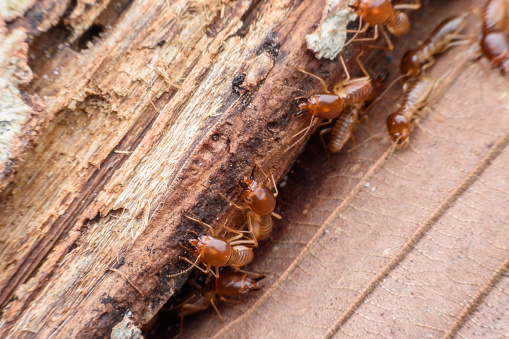DEAR JOAN: We had our house treated for termites five years ago with Termidor. It was put in the ground around the house and in the basement.
Since then, it seems we have had no ants. We wonder if the poison kills ants, and also, how safe is Termidor for humans?
— Wakean, Oakland
DEAR WAKEAN: Termidor is the brand name of a product commonly used for termite treatment. It’s also used on building site soil as a preventative before construction.
Its active ingredient is a pesticide called Firponil, which was approved for use in the United States in 1996. But Firponil is banned in several countries because of reports that it is harmful to wildlife including fish, bees, some birds and invertebrates.
The U.S. permits its use but puts limits on access to the strongest formulas and what can be sold to the general public. Firponil can be found in off-the-shelf products such as grass treatments, gel baits and pet care products.
The pesticide can kill termites, a variety of ants, cockroaches, fleas and ticks. Its threat to humans is debated. Exposure through contact can cause some minor health issues, such as skin rashes. Taking the poison internally is more harmful, causing headache, nausea, vomiting and even seizures. Researchers say the greatest risk to humans is during application.
DEAR JOAN: You often tell us not to use rat poisons, but I’m fighting a losing battle against rats. I keep my yard cleared of the things you say attract rats – no pet food, no hiding places, I even took down my bird feeders. But my neighbors have not. It’s like Six Flags over Rat City there, and when (the rats) get tired of their yard, they come over to mine.
Are there any safe poisons I can use? I’ve tried traps, but they take the bait and keep on going.
— R.W., Antioch
DEAR R: Poisons, by their very nature, are intended to kill, so I don’t think we can say any of them are safe. Rodenticide manufacturers have tried to produce poisons that aren’t as harmful to other creatures, while still killing the rat, but for the most part these haven’t made life any easier for animals that might ingest the poison directly or eat the poisoned rat. There still are deaths and other health issues associated with the poison.
Pretty much all we’ve done is to kill rats more slowly and, in my opinion, with more pain and suffering than is required.
Related Articles
Decision on possible closure of Los Gatos horse stables delayed
When bees swarm in the Bay Area, who you gonna call? These heroes.
San Jose woman wants to keep the squirrels in her yard, but ditch the rats
US unveils new rules for bringing a dog into the country
Did a Southern California rattlesnake hitch a ride to Walnut Creek?
A newer product on the market, Rat X, is probably the “safest” rodenticide available as there’s no indication it’s harmful to birds, pets and other wildlife. It’s designed to work only on rodents, which means it might also kill squirrels, which are rodents too. It works by turning off a trigger that tells a rat it’s thirsty. The rat stops drinking and becomes dehydrated. Its kidneys start to fail, and after 5 to 7 days, it finally dies.
If you have to resort to lethal means, the old fashioned rat trap is still the quickest. Tie or glue the bait in place so the rat can’t grab it without fatal consequences. The traps should also be placed undercover to reduce the chances of harming other creatures.
Animal Life runs on Mondays. Contact Joan Morris at [email protected].


